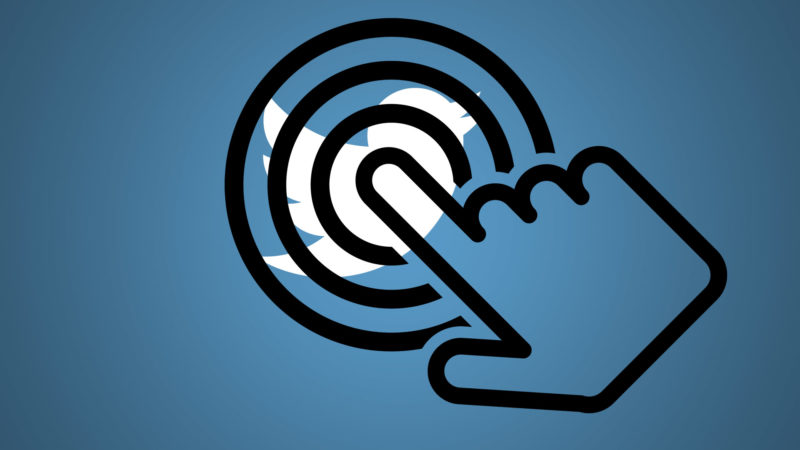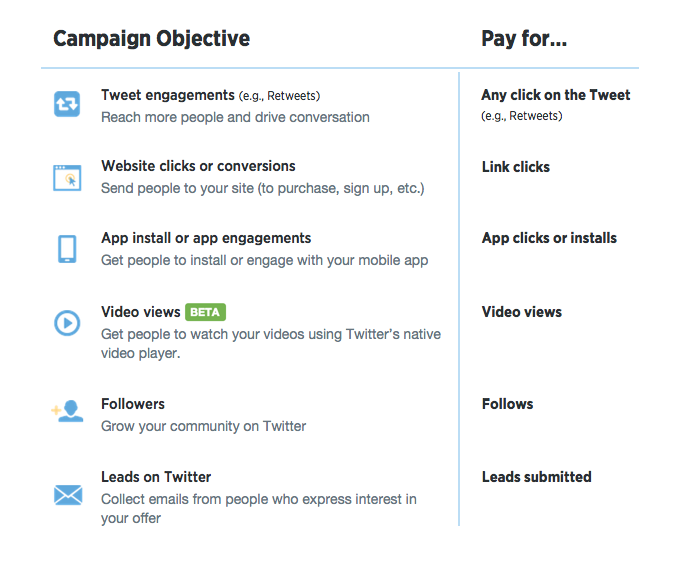Twitter’s Objective-Based Ads Are Now Available To All Advertisers
Company officially launches beta program that it says has helped improve efficiency and cut costs for advertisers who pay only for certain types of engagement, like website clicks, conversions, lead generation or video views.

Last August Twitter refined its ad products by giving some advertisers the ability to pay only for the engagement they wanted.
Called objective-based campaigns, the beta program enabled SMBs and ad API partners to focus on specific goals like increasing followers, driving more clicks or pushing more app installs. Advertisers using the feature are only charged for engagements they target. For instance if they are pursuing more clicks back to their site, all retweets or favorites are free.
Today, Twitter announced that it taking the program out of beta, giving access to objective-based campaigns, reports and pricing to all advertisers globally, including managed accounts that previously had been shut out.
There are six objectives available: tweet engagements, website clicks or conversions, app installs or engagement, followers, leads and video views (a beta offering that has been added to the mix since the original rollout in August).

In a blog post announcing the move, Twitter said businesses who have used the campaigns have increased the efficiency of their advertising on Twitter, driving better results at lower costs. Among the examples: eBay’s use of Website Cards to drive referral traffic produced a 59% quarter over quarter decrease in average paid cost per click and digital agency Gupta Media seeing a 24% conversion rate, double the average it gets on other advertising platforms, for its music industry-based campaigns.
Jaguar Land Rover also had success, according to Raunak Munot, the director of social strategy for Mindshare (GroupM), the agency that managed a campaign for the car company.
“In adaptive marketing, it’s key to tailor messages to the users’ varying motivations by utilizing different media types that encourage them to take the next step in the funnel,” Munot said in a quote on Twitter’s blog post. “With Twitter’s objective-based pricing, we only pay for actions that we care about. This has driven down costs and increased efficiencies, especially when driving shoppers to the website to take an action like filling out a request for quote form.”
Contributing authors are invited to create content for MarTech and are chosen for their expertise and contribution to the search community. Our contributors work under the oversight of the editorial staff and contributions are checked for quality and relevance to our readers. MarTech is owned by Semrush. Contributor was not asked to make any direct or indirect mentions of Semrush. The opinions they express are their own.
Related stories